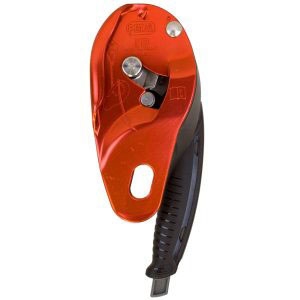We received an interesting question about pre-rigged systems from one of our subscribers. The TechPanel had some helpful comments to share, so we have re-posted the info here. It’s a great topic.
Things to consider about leaving systems pre-rigged
First of all, whether to pre-rig systems or not depends a lot on the types of rescues you will be doing. Pre-rigged systems make sense for most industrial and municipal teams who have rope equipment designated specifically for rescues. However, it makes less sense for climbers and wilderness personnel who will be using the same equipment for multiple uses and putting systems together based on a specific need. This also reduces the amount and weight of equipment they must carry, which is a big concern. However, it also requires a high level of proficiency in a variety of systems in order to build systems safely and in a timely manner.
What is a “pre-rigged system”?
- “Plug-n-Play” – These are systems that come pre-built and seem to require little training to operate. These “Plug-n-Play” systems may work for a specific location or type of rescue but may not work in every situation. Training for these systems should address what to do if the device/system malfunctions, or if it will not work for the type of scenario you may be faced with. These are things like the Petzl Jag or CMC Aztek.
- “Customized Pre-rigged Systems” – These are customized pre-rigged systems that rescuers build for site-specific needs and their team’s needs using existing equipment and training.
Confined space and rope rescue can be broken down into three core tasks: (1) Lowering, (2) Safety line Belay, and (3) Mechanical Advantage/Retrieval systems. You can build pre-rigged systems that make sense for your specific needs. Many of the teams we work with have adopted a three-bag system.
For example, one rope bag is designated for “Lowering” along with the typical equipment needed for a lowering system (i.e. descent control device, carabiners, anchor straps, padding). This will provide a pre-rigged system that will handle most of your lowering needs. You may decide to supplement that with another anchor strap and a pulley for a high-point directional, etc.
Your “Safety line/Belay” bag can be set up the same way with enough carabiners and shock absorbers attached to the rope bag to allow for at least two rescuers and a victim.
The third bag of rope (“Mechanical Advantage/Retrieval”) with a simple, pre-built Block-n-Tackle hauling system and its own anchor straps will give your team an “immediate means of retrieval” for either the main line or a safety line retrieval. With a few additional pieces of hardware, you will be able to handle the vast majority of urban rope/confined space rescue scenarios.
We find that for industrial rescue teams or municipal fire and police rescue squads, these pre-rigged systems make sense. They save set-up time and get a rescuer to the victim as quickly as possible, which is especially critical for an IDLH emergency.
Many times teams will arrange their equipment so that it’s easier to inventory rather than what’s the fastest way to deploy it. For example, if you have twenty carabiners, why not have them attached to a rapid deployment bag type system rather than in a hardware bag that a team member will have to go through and pick out what is needed?
Our best advice would be to look at your team’s response area and consider the types of rescues that may be needed. You can then customize and build pre-rigged systems that make sense for your team. “Plug-n-Play” systems may handle most of your rescue situations or they may be part of a larger pre-rigged rescue system like the one described above. Using a “pre-rigged systems” approach saves time, cuts down on confusion, and uses equipment more efficiently – especially when the pressure is on.
Still have your doubts? Try out some of our Quick Drills in your next team training session and compare your times between your current kit configuration and a pre-rigged setup.





